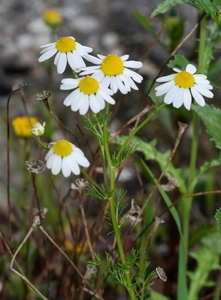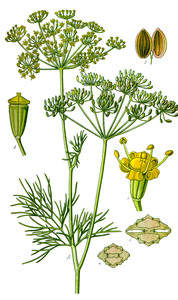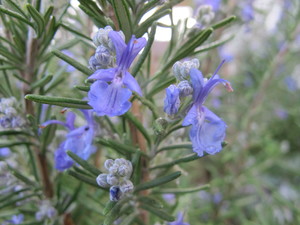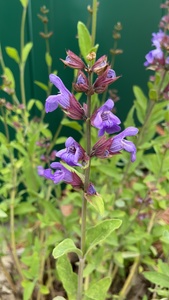Permaculture companion plants for Gai lan
| Image | Name | Data | Description | Actions |
|---|---|---|---|---|

|
Chamomile |
5-9
Full sun
Dry, Moist
Light (sandy), Medium, Heavy (clay)
0.5
0.05
Annual
Herbs
at last frost date
1 week
Matricaria recutita - L., German chamomile, wild chamomile
Kamille
Asteraceae or Compositae
Afghanistan, Albania, Algeria, Altay, Austria, Azores, Belarus, Belgium, Bulgaria, Buryatiya, Canary Is., Central European Rus, China North-Central, China South-Central, China Southeast, Cyprus, Czechoslovakia, Denmark, East Aegean Is., East European Russia, Egypt, Finland, France, Germany, Greece, Hungary, India, Iran, Iraq, Irkutsk, Italy, Kazakhstan, Kirgizstan, Korea, Krasnoyarsk, Kriti, Krym, Lebanon-Syria, Manchuria, Mongolia, Morocco, Myanmar, Netherlands, North Caucasus, Northwest European R, Norway, Pakistan, Palestine, Portugal, Romania, Sardegna, Sicilia, Sinai, South European Russi, Spain, Sweden, Switzerland, Tadzhikistan, Transcaucasus, Turkey, Turkey-in-Europe, Tuva, Ukraine, Uzbekistan, Vietnam, West Himalaya, West Siberia, Xinjiang, Yakutskiya, Yugoslavia
Alabama, Alberta, Arizona, Arkansas, Baleares, Baltic States, Bolivia, British Columbia, California, Colombia, Connecticut, Corse, Costa Rica, Cuba, District of Columbia, Dominican Republic, Ecuador, El Salvador, Ethiopia, Great Britain, Greenland, Guatemala, Gulf States, Honduras, Illinois, Indiana, Iowa, Ireland, Jawa, Juan Fernández Is., Kansas, Kentucky, Magadan, Maine, Mali, Manitoba, Maryland, Massachusetts, Mexico Southeast, Michigan, Minnesota, Mississippi, Missouri, New Jersey, New South Wales, New York, Newfoundland, Nicaragua, North Dakota, North European Russi, Nova Scotia, Ohio, Ontario, Oregon, Paraguay, Pennsylvania, Peru, Poland, Primorye, Québec, Rhode I., Saskatchewan, South Australia, Tennessee, Texas, Tunisia, Uruguay, Utah, Vermont, Virginia, Washington, Wisconsin
https://en.wikipedia.org/wiki/Matricaria_chamomilla
https://powo.science.kew.org/taxon/urn:lsid:ipni.org:names:154715-2
Direct sow in autumn or shortly before latest date of frost
Start seeds indoors 6-8 weeks before last frost date
|
Chamomile is a plant native to Europe, North Africa, and Western Asia. It has a small, daisy-like flower with white petals and a yellow center. The leaves are thin and feathery, and the stem is thin and wiry. Chamomile grows to be about 12-24 inches tall and spreads to about 16-20 inches wide. It grows quickly, producing flowers within a few weeks of germination. Chamomile prefers well-drained soil and full sun to partial shade. It is a hardy plant and can tolerate drought and frost. To cultivate chamomile successfully, it is important to keep the soil moist and well-watered, especially during hot weather. Needs light to germinate. The flowers and leaves of chamomile are edible and can be used in a variety of dishes, including teas and salads. The flowers can also be dried and stored for later use. Chamomile has a number of medicinal properties and has been used to treat a variety of conditions, including anxiety, insomnia, and digestive issues. It is also believed to have anti-inflammatory and antimicrobial properties. In addition to its medicinal uses, chamomile can also be used as a ground cover or as a companion plant in gardens. It can help to repel pests and improve the health of nearby plants. Chamomile is also valued by bees and other pollinators, making it an important plant for maintaining biodiversity in gardens and agricultural areas. #### Links [Chamomile @ Plants For A Future](https://pfaf.org/user/Plant.aspx?LatinName=Matricaria recutita) |
Show
Edit |

|
Anethum graveolens |
2-11
Full sun
Moist
Light (sandy), Medium
0.8
Annual
Herbs
Medium
15cm x 30cm
Essential Oil, Pest control, Fragrance
true
Leaves, Seed
Condiment, Tea
Dill
Apiaceae or umbelliferae
Algeria, Chad, Cyprus, Gulf States, Iran, Lebanon-Syria, Libya, Morocco, Oman, Saudi Arabia, Tunisia
Afghanistan, Alabama, Albania, Alberta, Altay, Andaman Is., Angola, Argentina Northeast, Arizona, Arkansas, Assam, Austria, Azores, Bahamas, Baleares, Baltic States, Bangladesh, Belarus, Belgium, Brazil South, Brazil Southeast, British Columbia, Bulgaria, California, Cameroon, Canary Is., Cape Verde, Cayman Is., Central European Rus, China North-Central, China South-Central, China Southeast, Connecticut, Costa Rica, Cuba, Czechoslovakia, Delaware, Denmark, Dominican Republic, East Aegean Is., East European Russia, East Himalaya, Ecuador, Eritrea, Ethiopia, Finland, France, Ghana, Great Britain, Greece, Guatemala, Haiti, Hawaii, Hungary, Illinois, India, Indiana, Iowa, Iraq, Italy, Jamaica, Kansas, Kazakhstan, Kentucky, Kenya, Kriti, Krym, Laos, Leeward Is., Louisiana, Madeira, Maine, Manitoba, Maryland, Massachusetts, Michigan, Minnesota, Missouri, Mongolia, Montana, Mozambique, Nebraska, Nepal, Netherlands, New Jersey, New York, Nicobar Is., Niger, Nigeria, North Carolina, North Dakota, Northwest European R, Norway, Ohio, Oklahoma, Ontario, Oregon, Pakistan, Palestine, Pennsylvania, Peru, Portugal, Primorye, Puerto Rico, Québec, Rhode I., Romania, Saskatchewan, Sicilia, Somalia, South Dakota, South European Russi, Spain, Sudan, Sweden, Switzerland, Tadzhikistan, Tanzania, Texas, Thailand, Transcaucasus, Trinidad-Tobago, Turkey, Turkey-in-Europe, Ukraine, Uzbekistan, Vietnam, Virginia, Wake I., Washington, West Virginia, Windward Is., Wisconsin, Yugoslavia
https://en.wikipedia.org/wiki/Dill
https://pfaf.org/User/Plant.aspx?LatinName=Anethum graveolens
https://powo.science.kew.org/taxon/urn:lsid:ipni.org:names:837530-1
Dill
|
Dill (Anethum graveolens) is a plant native to the eastern Mediterranean region and West Asia. It is an annual herb that grows to a height of about 1-2 feet and has delicate, feathery leaves. The plant has small yellow flowers that bloom in the summer. Dill is a popular herb in many cuisines, especially in European and Middle Eastern dishes. It is used to flavor soups, stews, fish, and pickles. The leaves and seeds of dill are both edible and can be used fresh or dried. The seeds have a more pungent flavor than the leaves and are often used in pickling. Dill can be stored by drying or freezing the leaves and seeds. Dill prefers full sun and well-drained soil. It is easy to grow and can be started from seed or from transplants. Dill is not winter hardy and will die off in the winter. In addition to its culinary uses, dill has been used medicinally to aid in digestion and to reduce inflammation. It has also been used as a natural insect repellent. The plant is attractive to many types of beneficial insects, making it a valuable addition to any garden. |
Show
Edit |

|
Rosemary |
6-11
Perennial
Full sun
Dry, Moist
Light (sandy), Medium
Evergreen
1.5
Herbs
Attracts insects, Hedgerow
true
Leaves
https://en.wikipedia.org/wiki/Rosemary
Medium
Lamiaceae or labiatae
true
Rosmarinus officinale, rosmarinus officinalis
https://pfaf.org/User/Plant.aspx?LatinName=Rosmarinus officinalis
Albania, Algeria, Baleares, Corse, Cyprus, East Aegean Is., Egypt, France, Greece, Italy, Libya, Morocco, Portugal, Sardegna, Sicilia, Spain, Tunisia, Turkey, Yugoslavia
Azores, Bermuda, Bulgaria, Canary Is., Cape Verde, Germany, Great Britain, Kriti, Krym, Madeira, Mexico Central, Mexico Southwest, Texas, Trinidad-Tobago
1.2
https://powo.science.kew.org/taxon/urn:lsid:ipni.org:names:457138-1
|
Rosemary (Salvia rosmarinus) is a woody, perennial herb native to the Mediterranean region. It is an evergreen shrub that grows to a height of 1-2 meters and has narrow, linear leaves that are about 2-4 cm long and 1-2 mm wide. The leaves are dark green in color and have a strong, pungent aroma. The flowers of rosemary are blue, purple, or white in color and grow in clusters on the tips of the branches. Rosemary prefers well-drained soil and full sun, and it grows best in temperate climates. It can be grown in a variety of soil types, including sandy and loamy soils, but it does not tolerate wet or waterlogged conditions. To cultivate rosemary successfully, the plant should be watered regularly during the growing season and pruned regularly to maintain its shape. Rosemary's leaves are edible and can be used as a seasoning in a variety of dishes. The leaves can be dried and stored for later use, or they can be used fresh. They can also be used to make tea. Rosemary has a number of uses, including as a medicinal herb and as a source of essential oils. It has been used to treat a variety of ailments, including indigestion, headaches, and muscle pain. It has also been used to improve memory and cognitive function. In addition, rosemary has been used as a fertility aid and to improve circulation. Rosemary is not particularly valuable as a food source for wildlife, but it can provide shelter and habitat for a variety of animals. It is often used as a decorative plant in gardens and landscaping. |
Show
Edit |

|
Sage |
3-11
Annual, Perennial
Full sun
Dry, Moist
Light (sandy), Medium
Evergreen
0.6
Herbs
Flowers, Leaves
https://en.wikipedia.org/wiki/Salvia_officinalis
Medium
Kitchen sage, Small Leaf Sage, Garden Sage, Adacayi, Broadleaf sage, Ching-chieh, Common sage, Echter salbei, Mariyamiya, Sa er wei ya, Salbei, Salie, Salva, Salvia, Sauge commune, Sauge officinale, Sauge, Shalfey, True sage
Lamiaceae or Labiatae
Salbei
https://pfaf.org/User/Plant.aspx?LatinName=Salvia officinalis
Albania, France, Germany, Greece, Italy, Spain, Switzerland, Yugoslavia
Alabama, Algeria, Austria, Azores, Baleares, Bulgaria, California, Canary Is., Connecticut, Czechoslovakia, Georgia, Idaho, Kentucky, Korea, Libya, Maine, Maryland, Michigan, Morocco, New York, Ohio, Ontario, Oregon, Pennsylvania, Portugal, Québec, Rhode I., Romania, Sardegna, Sicilia, South European Russi, Tennessee, Transcaucasus, Tunisia, Turkey-in-Europe, Ukraine, Uruguay, Utah, Vermont, Virginia, Washington, West Virginia
0.75
https://powo.science.kew.org/taxon/urn:lsid:ipni.org:names:456833-1
Condiment, Tea
Compost, Essential Oil, Strewing, Teeth, Dynamic accumulator, Ground cover, Fragrance
true
|
Sage is a perennial herb native to the Mediterranean region. It has woody stems with gray-green leaves that are typically 2-4 inches long and have a soft, velvety texture. The flowers of sage are small and typically blue or purple, although they can also be white or pink. Sage grows to a height of about 2-3 feet and has a spreading habit. Sage prefers well-drained, sandy soil and full sun, and is drought-tolerant once established. It is winter hardy in most climates, but may need to be protected in very cold regions. To cultivate sage successfully, it is important to prune the plant regularly to promote new growth and prevent the plant from becoming woody. The leaves of sage are edible and have a strong, savory flavor. They can be used fresh or dried and are often used in dishes such as stuffings, sausages, and marinades. The leaves can also be stored for later use by drying them and storing them in an airtight container. Sage has a number of uses beyond its culinary value. It has traditionally been used for its medicinal properties, and is said to have antibacterial and anti-inflammatory effects. It is also often used as a fertility herb and is said to promote lactation in nursing mothers. Sage can also be used as a natural insect repellent and as a mulch to suppress weeds. Sage is valued by wildlife for its nectar, which attracts bees and other pollinators. It is also an important host plant for the larvae of several species of butterflies and moths. In addition, the leaves of sage can be used as a natural insecticide to control aphids and other garden pests. In humid zones above 9 it might be only possible to grow as an annual. |
Show
Edit |